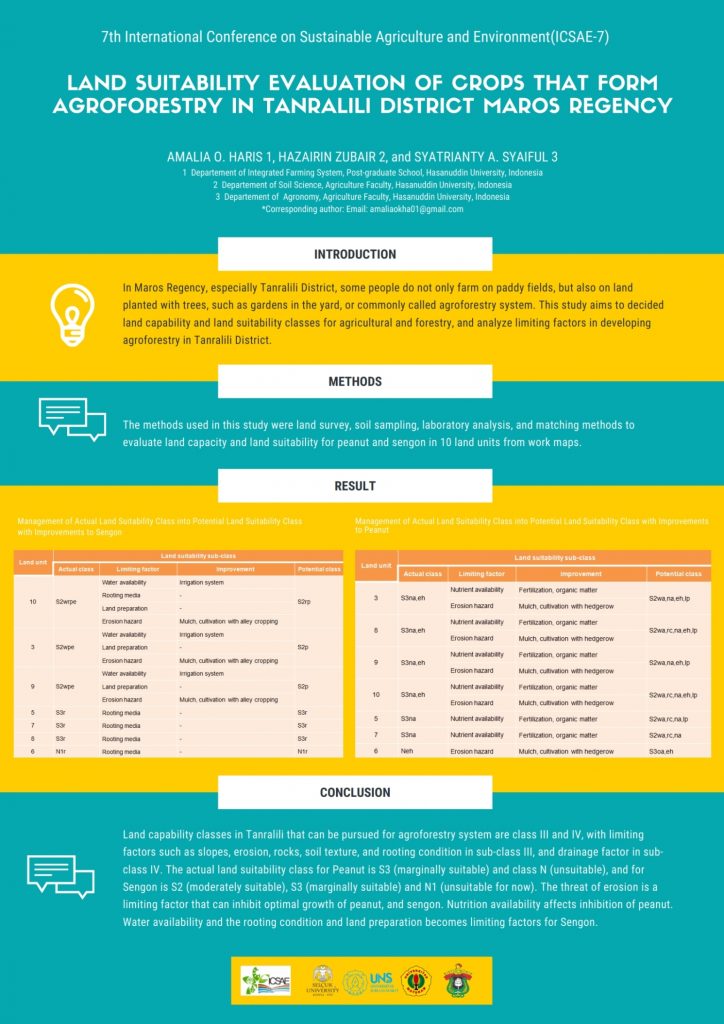Paper ID: 37
LAND SUITABILITY EVALUATION OF CROPS THAT FORM AGROFORESTRY IN TANRALILI DISTRICT MAROS REGENCY
Authorship
Amalia Oktavianty Haris1, Hazairin Zubair2 And Syatrianty Andi Syaiful3
1Departement of Integrated Farming System, Graduate School, Hasanuddin University, Indonesia
2 Departement of Soil Science, Agriculture Faculty, Hasanuddin University, Indonesia
3Departement of Agronomy, Agriculture Faculty, Hasanuddin University, Indonesia
amaliaokha01@gmail.com
Abstract
In Maros Regency, especially Tanralili District, some people do not only farm on paddy fields, but also on land planted with trees, such as gardens in the yard, or commonly called agroforestry system. This study aims to decided land capability and land suitability classes for agricultural and forestry, and analyze limiting factors in developing agroforestry in Tanralili District. The methods used in this study were land survey, soil sampling, laboratory analysis, and matching methods to evaluate land capacity and land suitability for peanut and sengon in 10 land units from work maps. The results of this study show that land capability classes in Tanralili that can be pursued for agroforestry systes are class III and IV, with limiting factors such as slopes, erosion, rocks, soil texture, and rooting condition in sub-class III, and drainage factor in sub-class IV. The actual land suitability class for Peanut is S3 (marginally suitable) and class N (unsuitable), and for Sengon is S2 (moderately suitable), S3 (marginally suitable) and N1 (unsuitable for now). The threat of erosion is a limiting factor that can inhibit optimal growth of peanut, and sengon. Nutrition availability affects inhibition of peanut. Water availability and the rooting condition and land preparation becomes limiting factors for Sengon.
